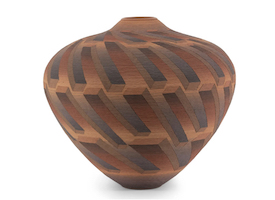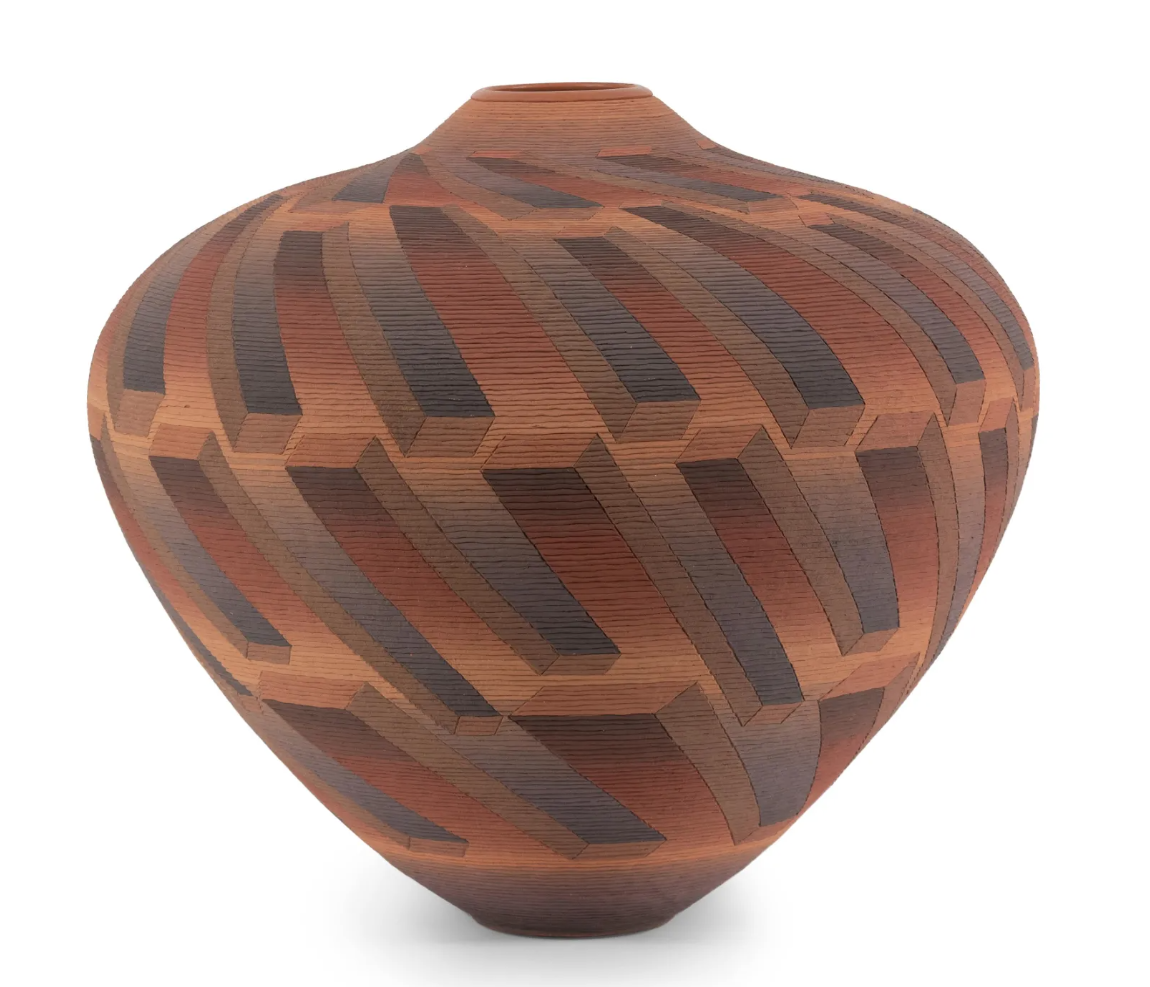
NEW YORK — Contemporary Native American ceramicist Richard Zane Smith (American, b. 1955-) hails from the Wyandotte nation, based in Oklahoma, which has a strong cultural heritage and artistic tradition. Smith sets a high bar for any artist working in clay today and is celebrated for his technique and imagination.
As a teacher at a Navajo mission school in the 1970s, Smith was given just $50 a year for art supplies, so he learned to be creative. He and the children would dig up clay from the local desert to use in class. In those clay deposits, he discovered ancient Pueblo pottery shards that had a corrugated appearance. This style of pottery and his own heritage as a Wyandotte descendent inspired his works. He has been a full-time potter since 1984.
Maranda Moran, the Western and American Indian specialist at John Moran Auctioneers in Monrovia, California, said while Smith’s work has been considered desirable for decades, it has come into its own recently in the secondary market. “An artist’s ability to transcend the gallery and the cultivated clientele they serve always speaks volumes, and Smith’s works do just that,” she said. “His use of native clays and prehistoric techniques to achieve modern-day relevance is unparalleled.”
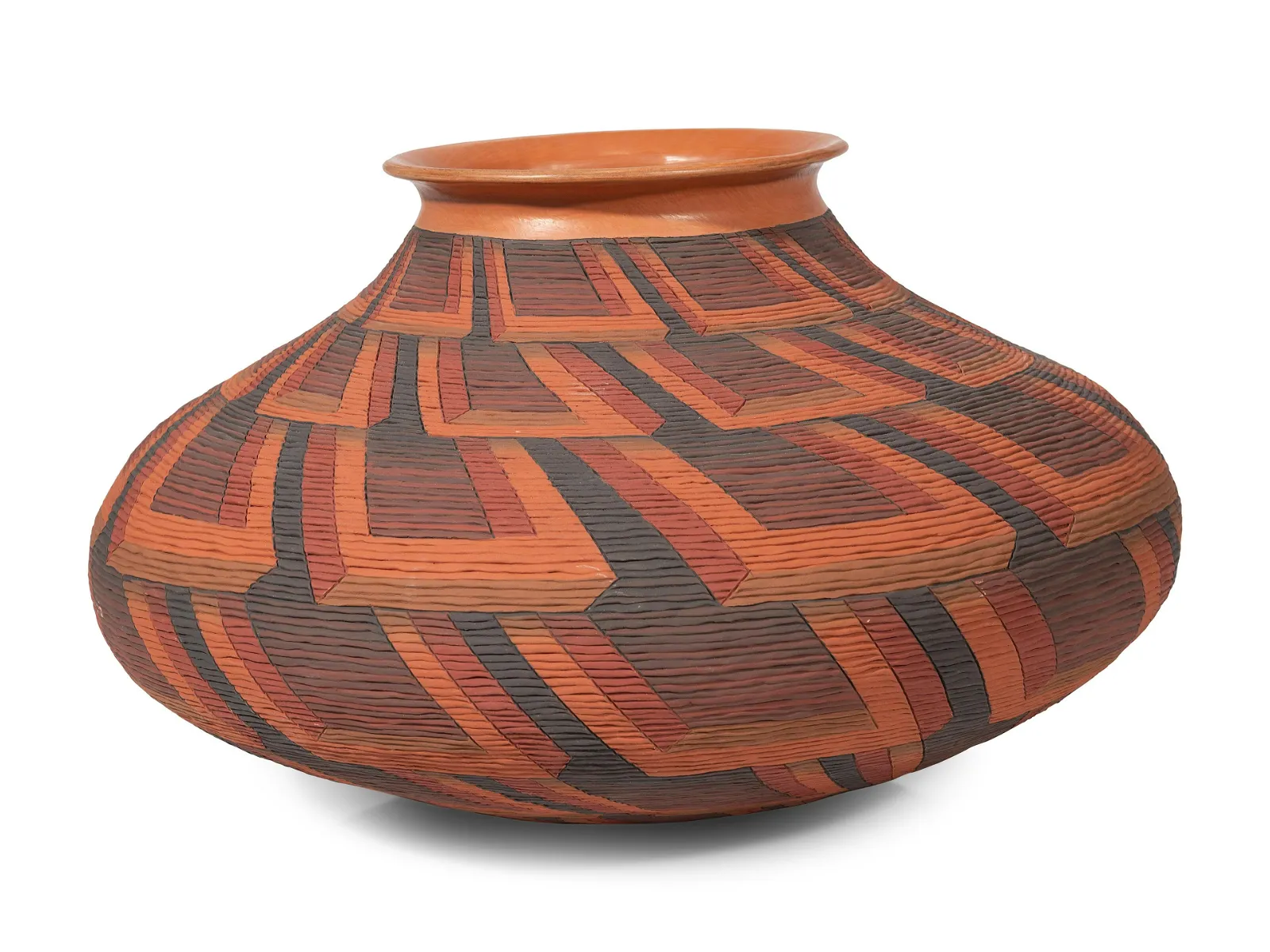
Moran’s introduction to Smith’s pottery — most of which comprise corrugated coils that resemble woven baskets — came through the glossy pages and studio lighting of art magazines. “I was instantly intrigued with the use of clay, the look of baskets and the bold use of patterns,” she said. “I happened into a client’s collection who had a lovely lidded bowl that when opened revealed a collection of anti-war images and statements affixed to the interior. This hidden but moving statement tied the beautiful and meaningful together for me, and I have been a huge fan ever since.”
Moran added that the signature corrugated texture of a Smith pot commands the eye from across a room and holds the viewer’s gaze. “The hand-built coiled forms fool the eye into thinking they could be baskets from afar, drawing the viewer in for further investigation,” she said. “His masterful use of traditional clays and slip glazes combined with the historical reference of the corrugated texture brings the 15th century to life in these modern-day jewels.”

Aptly demonstrating these corrugated coil forms is The Glory of God, a 1998 vessel that brought $7,000 plus the buyer’s premium in May 2022 at Hindman.
Gallerist Charles S. King of King Galleries in Scottsdale, Arizona and Santa Fe, New Mexico, said the market remains strong for Smith, who has been one of the leading native potters for the past several decades. “Richard Zane Smith’s technique of creating corrugated pottery is distinctive for his work. It is derived from the most ancient pottery techniques but made modern with his thin walls and creative designs,” he said. “Collectors are always drawn to the size of his pottery, the colors and often the stories behind the shapes or imagery. His recent work continues an evolution in technique and design.”

In interviews, Smith has spoken of what he calls the “rootedness” of his work and how his cultural heritage informs it. Moran stated that Smith’s ability to tie his mixed cultural background into a material object is impressive: “The viewer instinctively knows that this pottery is a reflection of the past that uses the basic elements in a new and expressive way.” Echoing her sentiments, King added, “Richard has spent a lot of time researching and studying the Wyandot language and history. His research into the past has led to the distinctive pottery he is creating today — his work is not a revival of the past, but his own artistic interpretations and inspiration paving the way for other potters to use the clay as a voice for their culture.”
Like many of his fellow artists, Smith uses art to comment on social issues from homelessness to the treatment of Indigenous people. A polychrome jar that earned $3,400 in June 2018 at Heritage Auctions looks like any of his fine pieces and is notable in its own right. Adding to its power is Smith’s inscription on the base, “to a homeless child,” along with the artist’s signature.
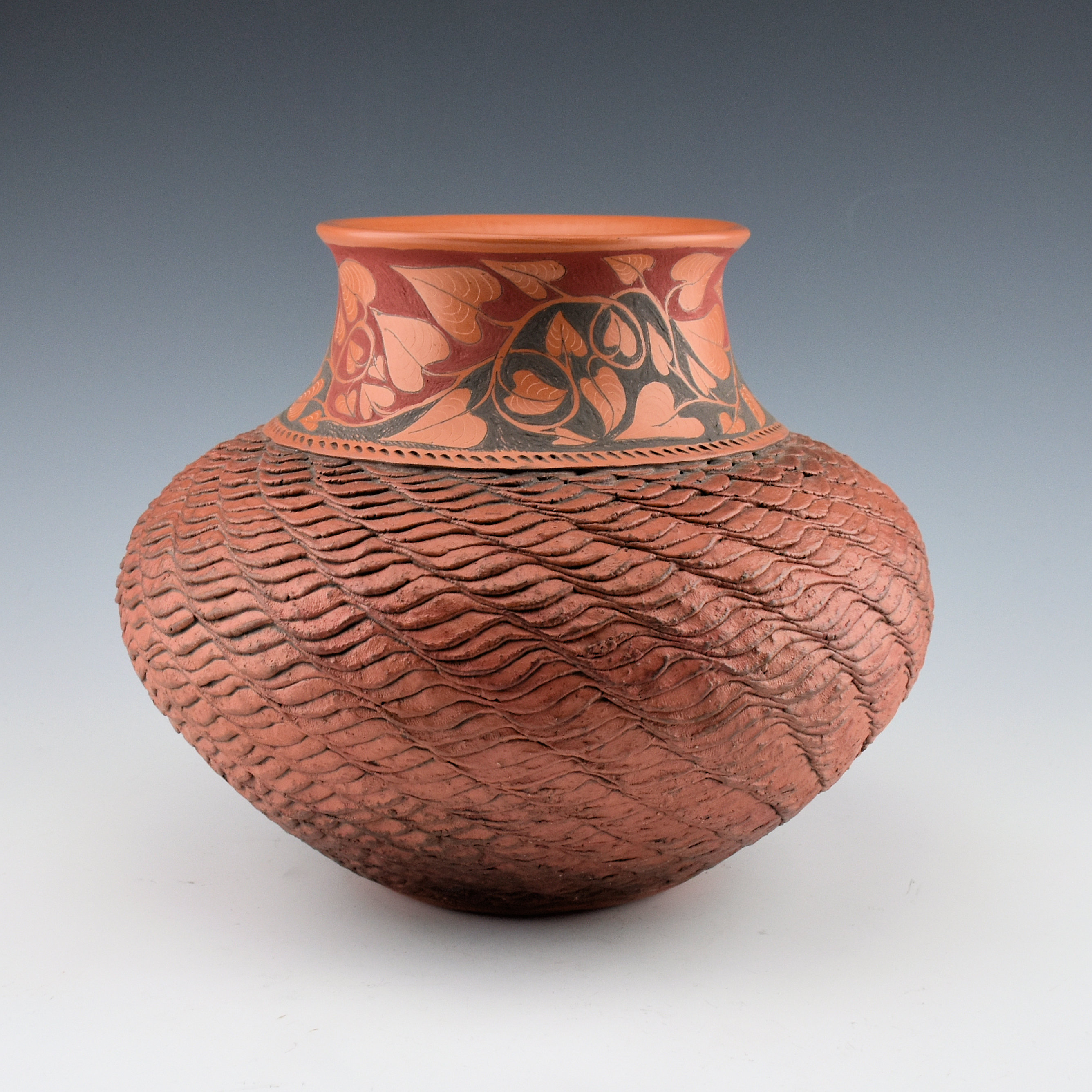
In addition to his bold geometric patterns, Smith often incises details on his works, such as leaves. King Galleries has had several fine examples of his work, including a circa-2000s jar that has an incised leaves design running around its shoulder. The jar also features a shingle-lapped style of thin coils with a horizontal orientation, which creates a sense of movement thanks to the artist choosing to lay the coils diagonally across the vessel.
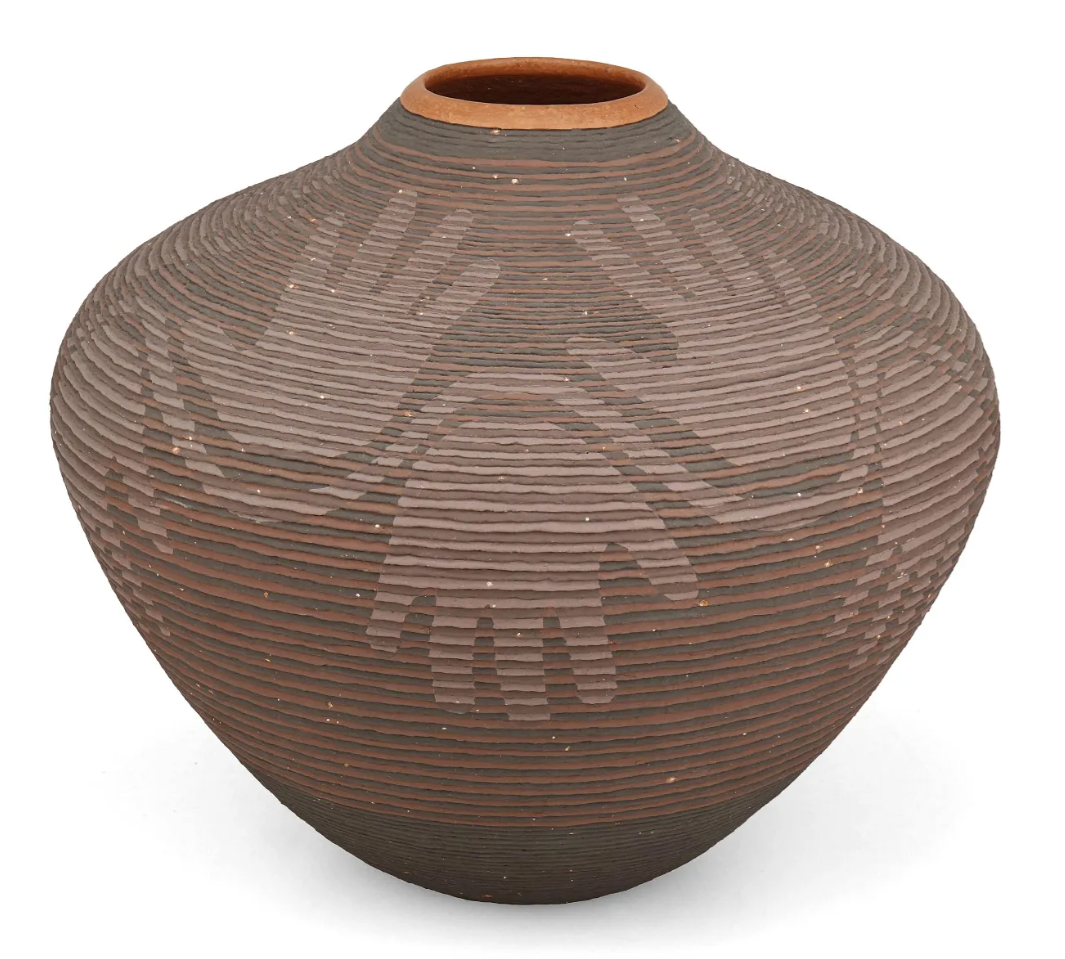
Smith’s artistic process is rigorous, allotting several hours for the coils alone. Smith rolls out chunks of clay, one at a time, into very thin and long pieces that look like angel hair spaghetti, which he then adds to the vessel’s exterior, stopping just short of the rim.
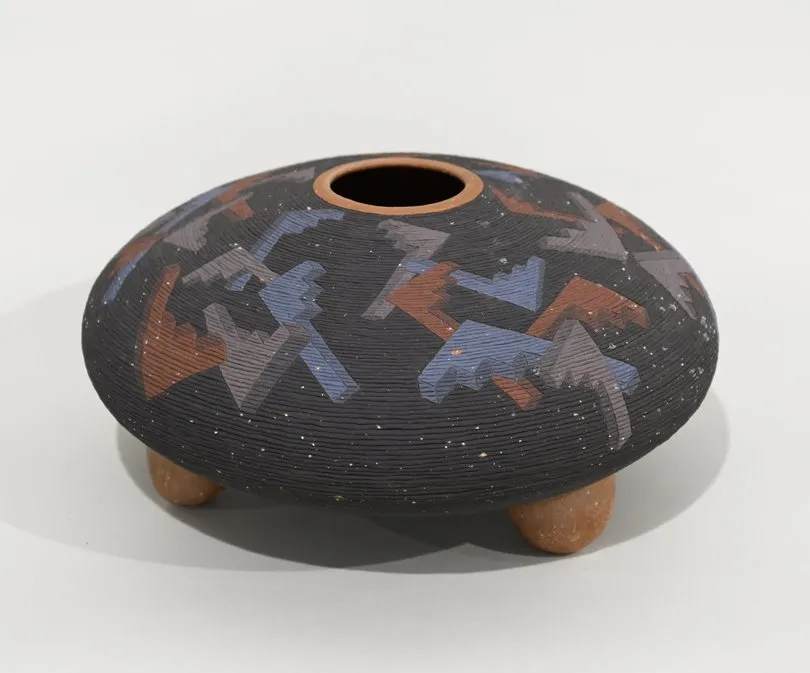
Another unusual example of Smith’s work is a corrugated piece decorated with three large painted handprints. It attained $1,600 plus the buyer’s premium in May 2022 at John Moran Auctioneers. Sometimes the artist engages his playful side, as with a 1990 Flying Saucer pot festooned with floating geometric forms painted in pale hues of purple, blue and sienna over a dark speckled background. The piece sold for $3,300 plus the buyer’s premium in June 2019 at New Haven Auctions – Fred Giampietro. On the bottom of the Flying Saucer pot, the artist inscribed: “May the work of my hands be a sweet sacrifice of praise to you, almighty God!”
While he is inspired by ancient techniques, Smith creates pottery with a decidedly modern bent, and his work continues to evolve.


